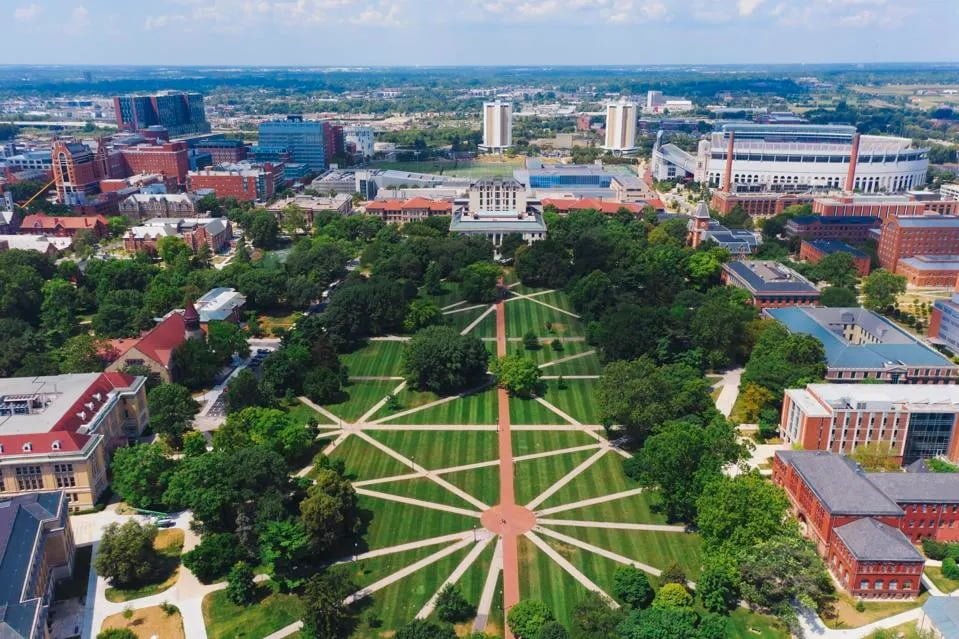The state of Ohio is creating five “intellectual diversity” centers at Ohio State University, the University of Toledo, Miami University, Cleveland State University and the University of Cincinnati.
These five centers, which will cost $24 million over the next two fiscal years, were included in Ohio’s two-year budget, which totals nearly $200 billion and was signed into law recently by Governor Mike DeWine.
The centers were added as a result of Senate Bill 117, which, when it was first introduced in May, created just two such centers – the Salmon P. Chase Center for Civics, Culture, and Society at Ohio State University and the Institute of American Constitutional Thought and Leadership at the University of Toledo College of Law.
But an amendment was later added to the bill that created three more similar centers at Miami University, Cleveland State University, and the University of Cincinnati.
Under Ohio’s new budget, Ohio State will receive $5 million for each of the next two fiscal years, while the University of Toledo will receive $1 million each fiscal year. Each of the centers at Miami, Cleveland, and Cincinnati will receive $2 million for each fiscal year.
The bill creating the centers was passed along partisan lines, with Republicans supporting it, and Democrats opposing. The original intent, according to Sen. Jerry Cirino, R-Kirtland and one of the bill’s co-sponsors, was to create units that would be a counterweight to what he perceived as the liberal bias of university faculty.
“There is a structural preponderance of one line of thought in our universities today,” Cirino is quoted as saying in the Ohio Capital Journal . “One of the ways to change the structural preponderance of one line of thought is to set institutes like these up to assist our universities in moving forward with more intellectual diversity.” Cirino added, “This causes a single ideological perspective to dominate academia. With the passage of this legislation, we are giving students and their parents’ options within the market to choose an education that is best suited for them.”
Democrats opposed the centers, calling them a waste of money and objecting to the way they were imposed on the universities, some of which had no idea that the centers were being created. “The amendment is atrocious,” said Sen. Catherine Ingram, D-Cincinnati, according to the Ohio Capital Journal.
Leaving aside the obvious problems of politicians mandating academic units at public universities, the language of SB 117 is likely to create administrative and budgetary headaches for the institutions. First, they create significant duplication of effort, a problem that legislators are typically eager to eliminate rather than encourage.
The bill also outlines the process for appointing a director of each center, and it gives those directors unusual authority in hiring faculty and in approving curricula.
In addition, rather than leaving the location and size of the units to universities, the bill specifies their size and structure and to some extent their curricula.
For example, the new center at Ohio State will hire “not fewer than fifteen tenure-track faculty positions” to teach at the center, adding that “no faculty outside of the center shall have the authority to block faculty hires into the center.”
Each of the centers at Miami University, Cleveland State and the University of Cincinnati will be required to hire at least ten faculty members, and the University of Toledo is directed to hire at least five.
The Ohio mandates are just the latest example of legislative overreach into public higher education, and while college leaders can take a bit of comfort in the fact that some of the more egregious attempts by legislators to exert political control over Ohio’s public institutions did not materialize, this bill is bad enough to cause genuine concerns.
The problem of legislative overreach is most obvious when it comes to the funding of the centers. The bill’s appropriation covers two years, and while future legislatures and governors could extend the funding, they also could decide not to. What happens then of course is that the institutions will remain on the hook to pay for the faculty and staff they were required to hire for academic units most of them never wanted or needed in the first place.
Source : Forbes












